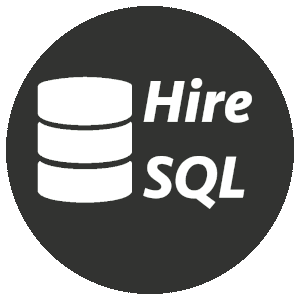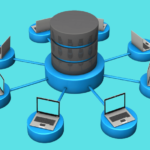
Data Warehousing Solutions enable efficient data storage and analysis with structured repositories and BI tools.
Data is the backbone of modern businesses, and in order to make informed decisions, organizations need to have easy access to accurate, timely data. This is where data warehousing solutions come in.
Data warehousing is the process of collecting, storing, and managing large amounts of data from various sources to provide analytical insights that can drive business decisions.
With the right data warehousing solution, businesses can turn raw data into strategic insights that provide a competitive advantage. These solutions enable organizations to analyze data quickly and efficiently, empowering them to make data-driven decisions that positively impact their bottom line.
Key Takeaways:
- Data warehousing solutions enable organizations to analyze large amounts of data quickly and efficiently.
- These solutions provide strategic insights that can drive informed business decisions.
- Data warehousing involves collecting, storing, and managing large amounts of data from various sources for analytical processing.
Warehouse Wisdom: Understanding the Basics
Data warehousing is a foundational component of modern data-driven businesses. At its core, data storage is used as a means to consolidate data from various sources into one central location for analytical processing. This process enables users to derive valuable insights from their data and make informed strategic decisions.
The analytical processing component of data warehousing solutions is essential to converting raw data into useful insights. Analytical processing allows businesses to effectively query, analyze, and visualize their data, enabling them to extract insights and understand the most important metrics to their business.
Proper data storage and analytical processing are essential components of effective data warehousing solutions, and it is only by mastering these fundamentals that businesses can realize the full potential of their data.
Choosing the Right Data Warehouse Architecture

In building a data warehousing solution, choosing the right architecture is crucial to ensure that businesses can store and process data efficiently. It is important to consider how much data storage is needed, as well as the level of analytical processing required. There are several data warehouse architectures to choose from, each with its own benefits and drawbacks.
Traditional Relational Data Warehouse
The traditional relational data warehouse is a centralized, on-premises database that stores data from multiple sources in a structured format. It uses SQL for querying and analytical processing, with the data organized into tables and columns. This architecture is a good choice for businesses with large datasets that require complex querying and analysis. However, it can be expensive to maintain, and its rigid structure can make it difficult to scale as data volumes grow.
Cloud-Based Data Warehouse
A cloud-based data warehouse takes advantage of cloud storage and computing services. It provides a scalable and cost-effective solution that doesn’t require businesses to invest in their own hardware or infrastructure. Cloud-based data warehouses are highly flexible, allowing businesses to choose the level of storage and processing power they need. Additionally, cloud-based solutions often offer real-time data processing and integration with other cloud services, such as machine learning algorithms. However, some businesses may feel uncomfortable with storing sensitive data on a third-party platform.
Hybrid Data Warehouse
A hybrid data warehouse combines the benefits of both traditional and cloud-based solutions. It offers the flexibility of cloud-based storage with the reliability and control of an on-premises solution. A hybrid solution allows businesses to store sensitive data in-house while taking advantage of cloud-based computing and storage resources as needed. It is also a good choice for businesses that need to store data both on-premises and in the cloud.
When choosing a data warehouse architecture, businesses should consider their specific needs, such as the amount of data they need to store, the level of analytical processing required, and their budget. Ultimately, the right architecture should provide a scalable and cost-effective solution for storing, processing, and analyzing data.
Data Integration and ETL Processes
One of the most crucial aspects of data warehousing is data integration. In order to unlock the power of business data, it’s important to consolidate and transform data from multiple sources into a single repository for analysis. This is where Extract, Transform, Load (ETL) processes come in.
During the extraction phase, data is extracted from different sources and brought to a central location. This data may include structured, semi-structured, and unstructured data.
The next phase is the transformation phase, where data is cleaned, standardized, and transformed into a consistent format for analysis. This involves applying business rules, data quality checks, and data enrichment.
Finally, the loaded data is moved into the data warehouse. This data must be stored in a way that is efficient for analytical processing. A traditional relational database model may not be the best solution when dealing with large datasets. A columnar database, a database that stores data by column rather than by row, may be a more effective solution.
At HireSQL, our dedicated SQL developers are experts at designing and implementing ETL processes for data warehousing solutions. We use SQL-based tools such as SQL Server Integration Services (SSIS) and Talend to build efficient ETL processes that ensure data quality and consistency.
Example ETL Code
INSERT INTO dim_customer (customer_name, email, phone_number, address, city, state, postal_code) SELECT DISTINCT customer_name, email, phone_number, address, city, state, postal_code FROM staging_customer
In this example, we’re extracting data from a staging area called “staging_customer” and loading it into a dimension table called “dim_customer”. We are also applying a DISTINCT clause to ensure that only unique rows are inserted into the dimension table.
Building a Scalable Data Warehouse
Data warehousing solutions are designed to store and process large volumes of data for analytical processing, but as your business grows, so too does the amount of data that needs to be stored and analyzed. To ensure your data warehousing solution is scalable, you need to consider the following:
| Strategy | Description |
|---|---|
| Vertical Scaling | Increasing the resources of a single server to handle more data |
| Horizontal Scaling | Adding more servers to create a cluster to handle more data |
| Data Partitioning | Splitting data into smaller partitions to balance queries and storage |
Vertical scaling is limited by the capacity of a single server, whereas horizontal scaling allows for unlimited growth but requires more complex management. Data partitioning allows for efficient querying and storage, but can be complex to implement.
It’s important to consider the long-term growth of your business and the scalability of your data warehousing solution when designing and implementing it. By following best practices and considering your specific business needs, you can build a scalable data warehouse that can grow with your company.
SQL Code Example:
CREATE TABLE customer_data PARTITION BY RANGE(year) ( PARTITION p0 VALUES LESS THAN (2000), PARTITION p1 VALUES LESS THAN (2005), PARTITION p2 VALUES LESS THAN (2010), PARTITION p3 VALUES LESS THAN (2015), PARTITION p4 VALUES LESS THAN (2020), PARTITION p5 VALUES LESS THAN (MAXVALUE) );
Ensuring Data Quality and Governance

In data warehousing, ensuring the quality and accuracy of data is of utmost importance. Poor data quality can lead to erroneous analyses and incorrect business decisions. That’s why it is crucial to establish data quality and governance policies and practices to maintain data integrity.
One approach to ensuring data quality is to implement data cleansing processes that detect and correct errors in data. These processes can involve data profiling, data standardization, and data enrichment. By detecting and correcting errors and inconsistencies in data, businesses can ensure that their analytical processes are based on clean and accurate data.
Data governance is another critical component of data warehousing. Data governance involves establishing policies and procedures for managing and protecting data assets. This includes defining data ownership, access controls, data retention policies, and disaster recovery plans. By implementing a robust data governance framework, businesses can create a culture of data responsibility and accountability.
For example, implementing a data quality and governance framework could involve:
- Defining data ownership and establishing data stewardship roles
- Implementing data profiling and cleansing processes
- Establishing access controls to protect sensitive data
- Defining data retention policies and procedures
By ensuring data quality and governance in their data warehousing solutions, businesses can gain confidence in their analytical processes and make more informed decisions based on high-quality data.
Leveraging Analytics for Actionable Insights
One of the primary goals of data warehousing solutions is to derive actionable insights from the vast amounts of data collected by businesses. Analytics plays a key role in this process, providing tools and techniques for analyzing data and extracting valuable information.
There are several types of analytics that can be applied to data stored in a data warehouse, including descriptive, diagnostic, predictive, and prescriptive analytics. Descriptive analytics involves summarizing past data to gain insights into trends and patterns. Diagnostic analytics investigates the causes of these trends and patterns. Predictive analytics uses statistical models to forecast future trends, while prescriptive analytics suggests actions to take based on those forecasts.
To achieve effective analytics, businesses must ensure that their data is properly organized and prepared for analysis. This involves implementing an effective data integration and ETL process, as well as establishing data quality and governance policies to ensure accurate and reliable data.
SQL can be a powerful tool for conducting analytics on data stored in a data warehouse. SQL queries can be used for data mining, statistical analysis, and machine learning. By leveraging SQL, businesses can gain deeper insights into their data and make more informed decisions.
Securing Data in a Data Warehouse

In today’s digital age, data is a valuable asset for businesses. As such, it is important to ensure that data stored in a data warehouse is secure from unauthorized access or breaches. Security measures should be incorporated into every aspect of data warehousing, from data integration to analytical processing.
One of the key measures to implement is user access control, which involves assigning different levels of access to users based on their roles and responsibilities. This can be achieved through the use of usernames and passwords, as well as authentication protocols such as multi-factor authentication.
Another important measure is data encryption, which involves converting data into a coded language, making it unreadable to unauthorized users. This should include both data in transit and data at rest, such as in the data warehouse itself.
Regular monitoring and auditing of data access and usage is also necessary to identify and prevent any potential security breaches or threats. This can be achieved through the use of audit logs and other monitoring tools.
In addition to these measures, it is important to establish clear and robust governance policies and practices surrounding data security. This includes regular data backups and disaster recovery plans.
By incorporating these security measures and best practices, businesses can ensure that their data warehousing solutions are secure and protected, allowing them to focus on leveraging data insights for informed decision-making.
Conclusion: Transform Your Business with Data Warehousing Solutions
Data warehousing solutions have become an essential aspect of modern business operations. By effectively storing and analyzing large datasets, businesses gain critical insights into their operations, customers, and markets. HireSQL is committed to providing dedicated SQL developers who are well-versed in data storage and analytical processing, ensuring that our clients get the most out of their data.
Throughout this article, we have examined the key elements of successful data warehousing. From understanding the basics to choosing the right architecture, integrating data, ensuring data quality and governance, and leveraging analytics for actionable insights, each component is essential for success.
It’s no secret that businesses today generate copious amounts of data from various sources, including social media, customer interactions, and sales. As data volumes continue to grow, the need for scalable data warehousing solutions becomes more critical. HireSQL’s SQL developers have the expertise to design and implement scalable data warehouse solutions that can handle the challenges of increasing data volumes over time.
Security is another essential aspect of data warehousing. By implementing robust security measures, businesses can protect their confidential data from breaches and unauthorized access. HireSQL’s SQL developers are well-versed in security protocols and best practices, ensuring that our clients’ data is always protected.
Looking to the future, data warehousing solutions are set to become even more critical for businesses. AI and machine learning algorithms are poised to play an increasingly significant role in data analytics, and real-time data processing is becoming more common. HireSQL’s SQL developers stay up-to-date with the latest trends and technologies, ensuring that our clients are always well-positioned to take advantage of emerging opportunities.
Data warehousing solutions provide businesses with the strategic insights they need to make informed decisions and remain competitive in today’s fast-paced marketplace.
HireSQL is committed to providing dedicated SQL developers who can design and implement effective data warehousing solutions that help our clients succeed. Contact us today to learn more.
FAQ

Q: What are data warehousing solutions?
A: Data warehousing solutions are systems or platforms that store and manage large volumes of data for analytical processing. They transform raw data into strategic insights, enabling businesses to make data-driven decisions.
Q: Why are data warehousing solutions important?
A: Data warehousing solutions are important because they allow businesses to unlock the power of their data. By consolidating and organizing data, businesses can gain valuable insights, identify patterns, and make informed decisions for improved performance and growth.
Q: What is the purpose of data storage in data warehousing?
A: Data storage in data warehousing is essential for preserving and managing large volumes of data. It provides a central repository where data from various sources can be stored and accessed for analytical processing and reporting.
Q: What is analytical processing in data warehousing?
A: Analytical processing in data warehousing involves performing complex queries, aggregations, and calculations on the stored data to gain insights and uncover patterns. It enables businesses to analyze and understand their data in a way that supports strategic decision-making.
Q: What are the different data warehouse architectures?
A: There are different data warehouse architectures, including the traditional relational data warehouse, cloud-based data warehouse, and hybrid approaches. Each architecture has its own advantages and considerations, and businesses should choose the one that best suits their needs.
Q: What is data integration in data warehousing?
A: Data integration in data warehousing refers to the process of combining data from multiple sources and consolidating it into a unified and consistent format. It ensures that data in the warehouse is accurate, complete, and reliable for analysis.
Q: What is the ETL process in data warehousing?
A: The ETL (Extract, Transform, Load) process in data warehousing involves extracting data from various sources, transforming it into a format suitable for storage and analysis, and loading it into the data warehouse. It is a crucial step in preparing data for analytical processing.
Q: How can I build a scalable data warehouse?
A: Building a scalable data warehouse involves designing a system that can handle increasing data volumes over time. Strategies include optimizing data storage, implementing scalable hardware infrastructure, and adopting technologies that support distributed processing.
Q: Why is data quality important in data warehousing?
A: Data quality is important in data warehousing because it ensures that the data stored in the warehouse is accurate, consistent, and reliable. High-quality data enables businesses to make confident decisions based on trustworthy information.
Q: What is data governance in data warehousing?
A: Data governance in data warehousing refers to the establishment of policies, processes, and controls to ensure the proper management, usage, and security of data. It ensures that data is protected, compliant with regulations, and aligned with business objectives.
Q: How can analytics be leveraged in data warehousing?
A: Analytics can be leveraged in data warehousing by using various techniques and tools to analyze the data stored in the warehouse. This includes performing statistical analysis, data mining, predictive modeling, and using visualization tools to derive actionable insights.
Q: What are the security measures for data in a data warehouse?
A: Security measures for data in a data warehouse include access control, encryption, data masking, regular security audits, and monitoring for unauthorized access or breaches. These measures ensure the confidentiality, integrity, and availability of business data.
James is a highly acclaimed author renowned for his extensive experience in the realm of data development and architecture, offering valuable insights to the data industry through his compelling literary works. Residing in the charming city of Oxford, he embarked on an illustrious academic journey at Oxford University, where he delved into the intricate world of computer science. This foundation served as the catalyst for his exceptional career.
After completing his studies, James embarked on a professional path that led him to renowned technology giants. He first honed his skills as a data developer at Microsoft, where he showcased his prowess in designing and implementing robust data solutions. His innovative contributions played a pivotal role in enhancing data management processes, solidifying his reputation as a meticulous and forward-thinking professional.
Seeking new challenges and broader horizons, James embarked on a transformative journey at Amazon Web Services (AWS). In this influential position, he leveraged his profound understanding of data architecture to shape cutting-edge solutions for clients. His leadership and technical acumen enabled businesses to harness the power of cloud computing and revolutionize their data management practices, further solidifying his status as an industry authority.







